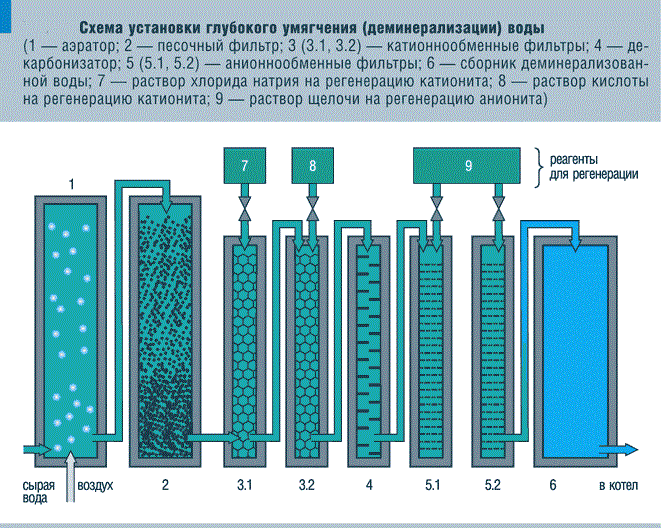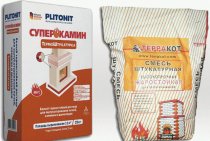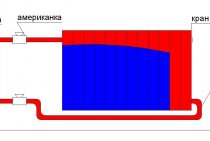The effect of low temperatures on soil and plants
Farming -
Living conditions of agricultural plants and their regulation
With the onset of stable negative temperatures, soil freezing begins. First, its upper layer freezes, and then the lower ones by 30-150 cm. The depth of freezing depends mainly on weather and soil conditions, as well as on the relief. Deep freezing of soils usually occurs in a winter with little snow and severe frosts.
Water freezes in soil at temperatures below zero degrees. This is due to the content of soluble substances in it. The higher the concentration of the solution, the lower the freezing point of water.
For example, in sandy and loamy soils water freezes at minus 4-4.5°C, while in peat soils, where the concentration of the solution is higher, only at minus 5°C.
Soils in elevated places freeze deeper than in lowlands, where there is more snow. The plains occupy a middle position. The higher the degree of dispersion of the soil and the stronger the effect of surface phenomena, the longer it does not freeze through. Excessively moist soils freeze more slowly due to the high heat capacity of water, as well as dry soils, since they have bound water, which turns into ice at lower temperatures. Dense soils freeze faster and to greater depths than loose soils.
On soddy-podzolic soils, due to the pulling of moisture (during freezing), the moisture content of the upper layer increases to full capacity. Ice crystals also grow in the soil as a result of condensation of vaporous moisture flowing from the lower soil horizons. Its movement in vapor form is associated with the difference in the elasticity of water vapor in the upper and lower layers of the soil.
The freezing of the upper layer at a moisture content below the full capacity improves the physical properties of the soil due to the rupture of large soil clods into small ones when the pores in which the water was located expand with ice crystals. Therefore, the soil plowed up in autumn crumbles well during spring processing.
Snow and vegetation cover, as well as forest litter, slow down the freezing of the soil.
Freezing and thawing of the soil has a significant impact on the overwintering of winter crops and clover. These phenomena are associated with the formation of an ice crust, soaks, damping and bulging of plant roots. They can also suffer from rapid and deep freezing of the soil.
For plant life, the number of ice crystals formed in the soil and their structure, which depends on temperature, humidity, density and other soil conditions, is of great importance.
In Belarus, the Baltic republics and adjacent regions of the Russian Federation, winter crops die the most from soaking, damping off, snow mold, and very rarely from freezing and drying out.
| Next > |
|---|
Heating and cooling of water bodies
Water,
unlike soil, for direct and scattered
solar radiation is transparent
body, and therefore short-wave radiant
energy penetrates into the water for quite a
considerable depth (depending on
water transparency from 10 to 100 m), and
radiative heating occurs
in a layer of water several meters thick.
Second
the difference is that the volume
heat capacity of water is approximately 2
times greater than the heat capacity of the soil, and
this reason, in order for them to achieve one
and the same temperature the water should get
more warmth than soil. If to the water
and the soil receives the same amount
heat, or they give the same
the amount of heat, the temperature of the water
will change by a smaller amount than
soil temperature.
Thirdly,
in the soil heat is transferred vertically
by molecular heat conduction,
and in easily moving water, heat transfer
vertically is carried out as a result
more active process - turbulent
mixing of water layers, due to which
there is an intense exchange
physical and chemical properties between these
layers. Turbulence in water bodies
driven by anxiety and
velocities of currents of water masses, as well as
thermal convection, and in the seas -
convection caused by salinity difference
water layers. Turbulent mixing
in reservoirs predetermines:
-
transference
heat deep into reservoirs by 1000-10000 times
more than carrying it in the soil; -
rapid
temperature equalization between layers
water; -
the heating
and cooling of water basins up to
much greater depths; -
more
slower than in soil, change
water surface temperatures, and
less than the change
temperature at the soil surface.
Surface
the water layer, like the soil, absorbs well
infrared radiation. Absorption conditions
and display of longwave radiation
in water basins and in soil are different
few. Otherwise, the matter with the shortwave
radiation. Short waves in particular
violet and ultraviolet, penetrate
deep into the water
and radiation heating occurs
in a layer of water several meters thick.
Discrepancies
thermal regime of water bodies and soils
caused by the following reasons:
—
the heat capacity of water is 3-4 times greater
soil heat capacity. Therefore, for
their equal heating, the water should
get more heat than the soil. If
water and soil will receive the same
the amount of heat, the temperature of the water
change less;
- water particles
have great mobility. Therefore, in
water bodies transfer of heat into the water
does not occur by molecular
thermal conductivity, as in soil, and in
the result of a more intensive process
– turbulent mixing.
Between
superficial and underlying layers
soil and water is constantly happening
heat exchange. Heat flux in soil or
body of water is approximately expressed
formula:
 ,
,
where
t2
and t1 –
temperature at depths z1
and z2;
λ - coefficient
thermal conductivity.
V
SI system, the heat flux is expressed in terms of
W/m2.
The functionality of the waters
Scheme of installation of deep water softening.
Groundwater is very valuable because it is the main source of water supply. The range of their use is very wide, because they are needed everywhere: for settlements, for industrial enterprises, and for the national economy. In order to search for and extract groundwater, wells are made or wells are drilled. It is better to build them using gravel backfilling and taking special filters made from galloon weaving mesh.
However, they are very destructive, negatively affecting various building materials, especially concrete. Therefore, before building anything, they analyze the aggressiveness of the water. Its classification is as follows. The least type of aggressiveness is general acid. Carbon dioxide has the greatest destructive effect. In addition to them, magnesia, leaching and sulfate aggressiveness are also distinguished.
The second most reliable will be the soil, because its temperature even in winter rarely drops below + 5 ° C. In any case, the rest of the production scheme and other characteristics will depend on what is used as energy production.
To get heat from groundwater, you will need to drill wells (absorption and extraction). A well is pre-drilled for control. She is obliged to confirm that the water is suitable, of good quality, meets the other criteria that are necessary for a heat pump. The temperature does not fluctuate much, even throughout the year.
http://www.vseoburenii.ru/youtu.be/aYO1XLg-ois
The range of 7-12°C ensures that neither the season nor the temperature of the surrounding air affects the stable heating performance. Such a system is very simple and does not require large operating and energy costs. It is suitable both for sanitation and general domestic water consumption. Geothermal energy is an alternative to other methods, which is environmentally friendly.
In all cases, protection and protection of water from pollution or depletion is envisaged. The goals of its rational use are being pursued. For example, the proximity to chemical plants, thermal power plants, processing plants, irrigation canals, mine drainage ditches significantly affects the chemical composition of water.
Mining operations often deplete the resources of springs and violate the hydrogeological regime. The coefficient of this influence directly depends on what kind of work is carried out, ground or underground. In the case of underground, it takes into account at what depth the development is taking place and other important factors. To achieve a positive effect, many means and technologies are used.
Soil temperature under snow.
Snow, as a good thermal insulator, has a great influence on the protection of the soil from freezing. And the looser the snow, the stronger the soil protection will be from the effects of low temperatures. But this value is not unambiguous and one indicator may differ from another not only from the distance of the regions, but also within the same region or district and depends on the temperature of the ground cover at the time of snowfall. If the snow falls on deeply frozen soil, and the height of the snow cover is not great, then the temperature of the soil under the snow, on its surface, and the temperature of the air above it will be almost identical. At the same time, if in these areas the snow depth reaches 15-20 cm, then the difference between the temperature of the soil and the snow surface will be 6-8 degrees; while the surface of the earth will be warmer. On the other hand, if snow falls on unfrozen ground, and the depth of the snow “cover” is large enough, then the temperature of the ground under the snow will be approximately from zero to -0.5 degrees. This suggests that snow, as a poor conductor of heat, reflecting the ultraviolet rays of the sun, reliably protects the top layer of the earth from cooling. At the same time, the soil surface cannot have a positive temperature, since in this case the snow will melt on contact with the ground.
The experiments of scientists have shown that at an air temperature of -25 ... -28 degrees and a snow cover height of 25 - 30 cm, the earth's temperature does not fall below -10 degrees, and at a depth of 35 - 40 cm - below -5 degrees. At the same time, at an air temperature of -45 gr. and a snow depth of up to 1.50 m, and provided that the snow is rather loose, the soil temperature does not fall below -8 gr. This once again proves that snow, like a reliable shield, covers the earth from freezing.



